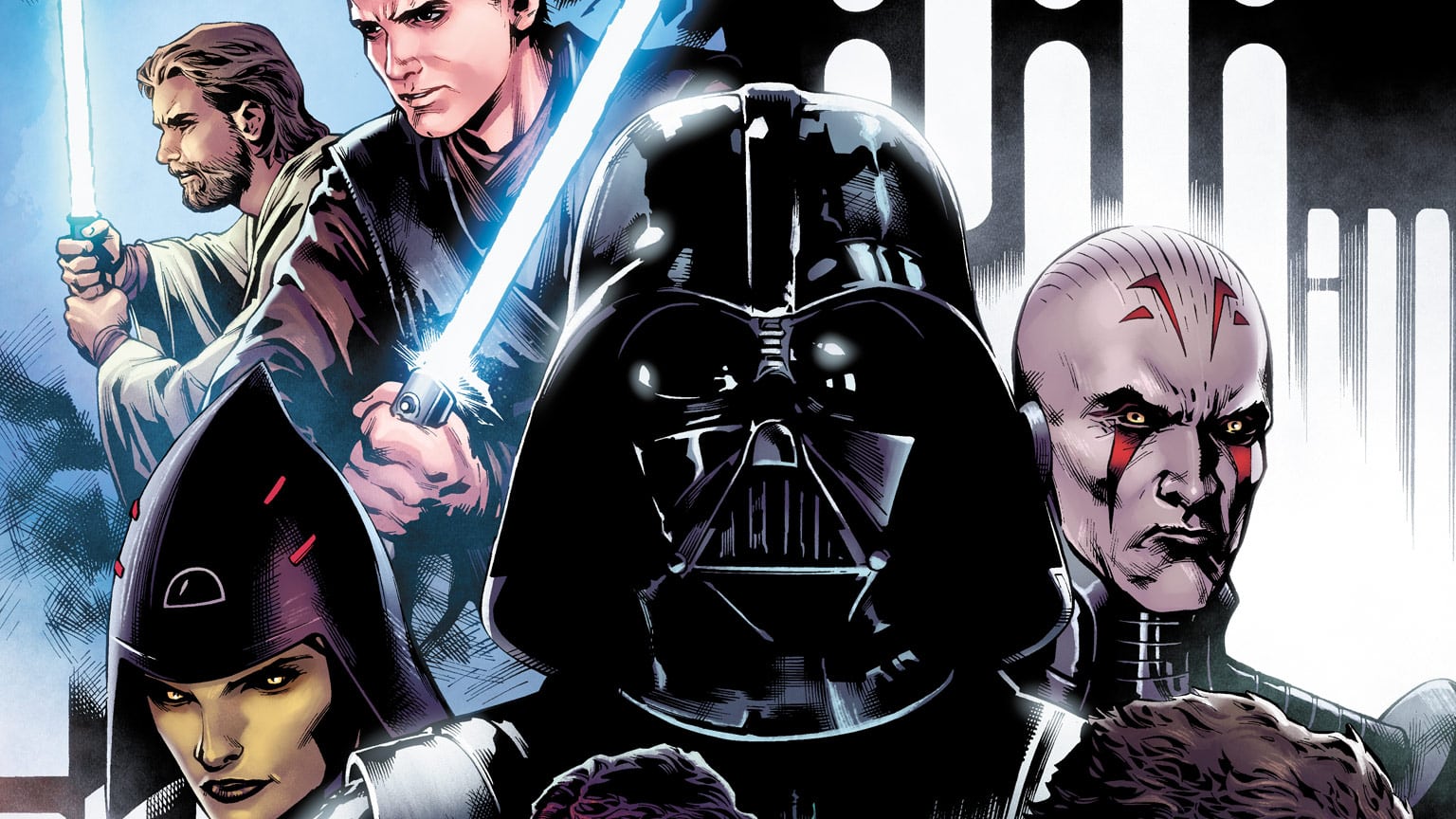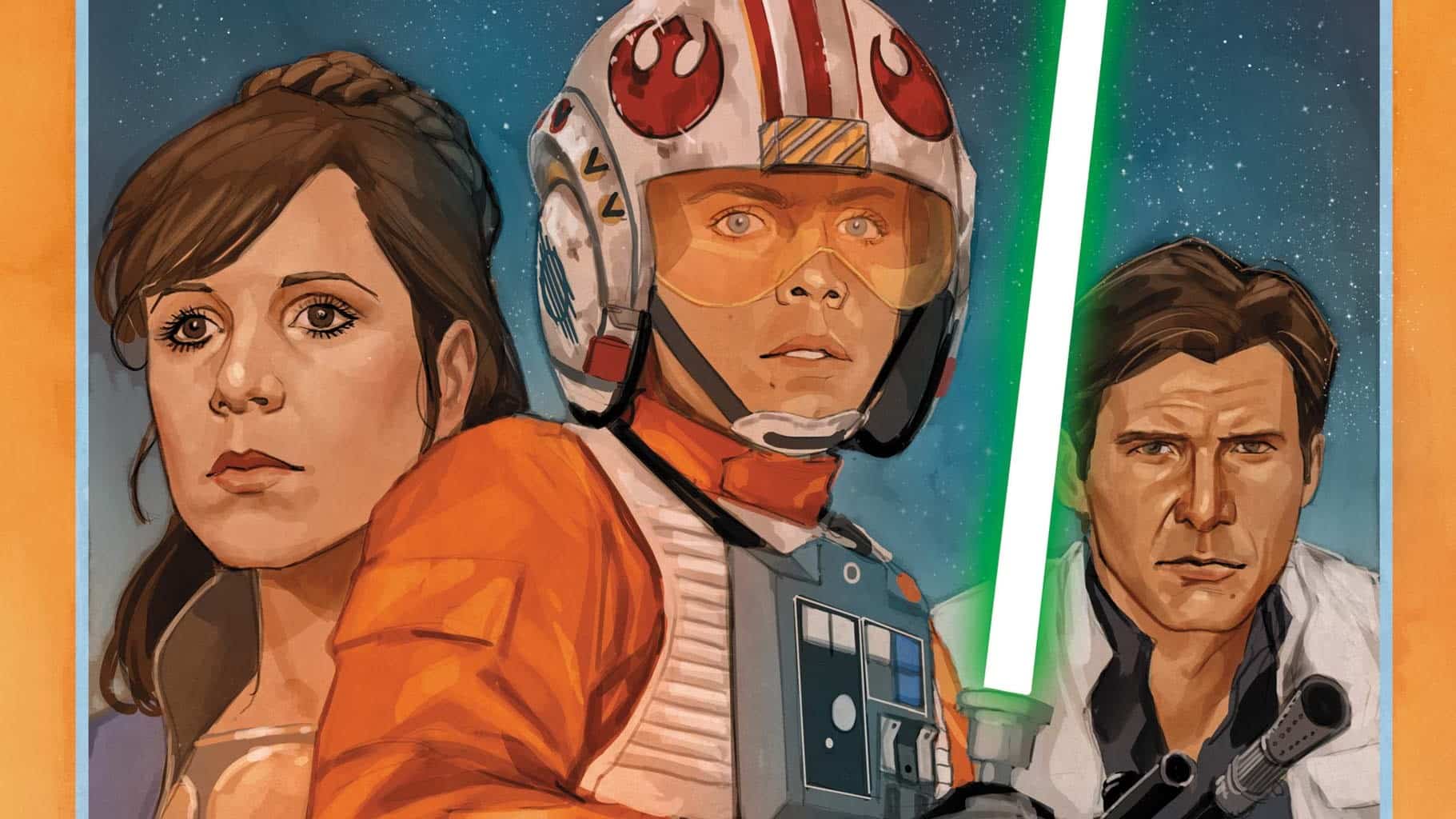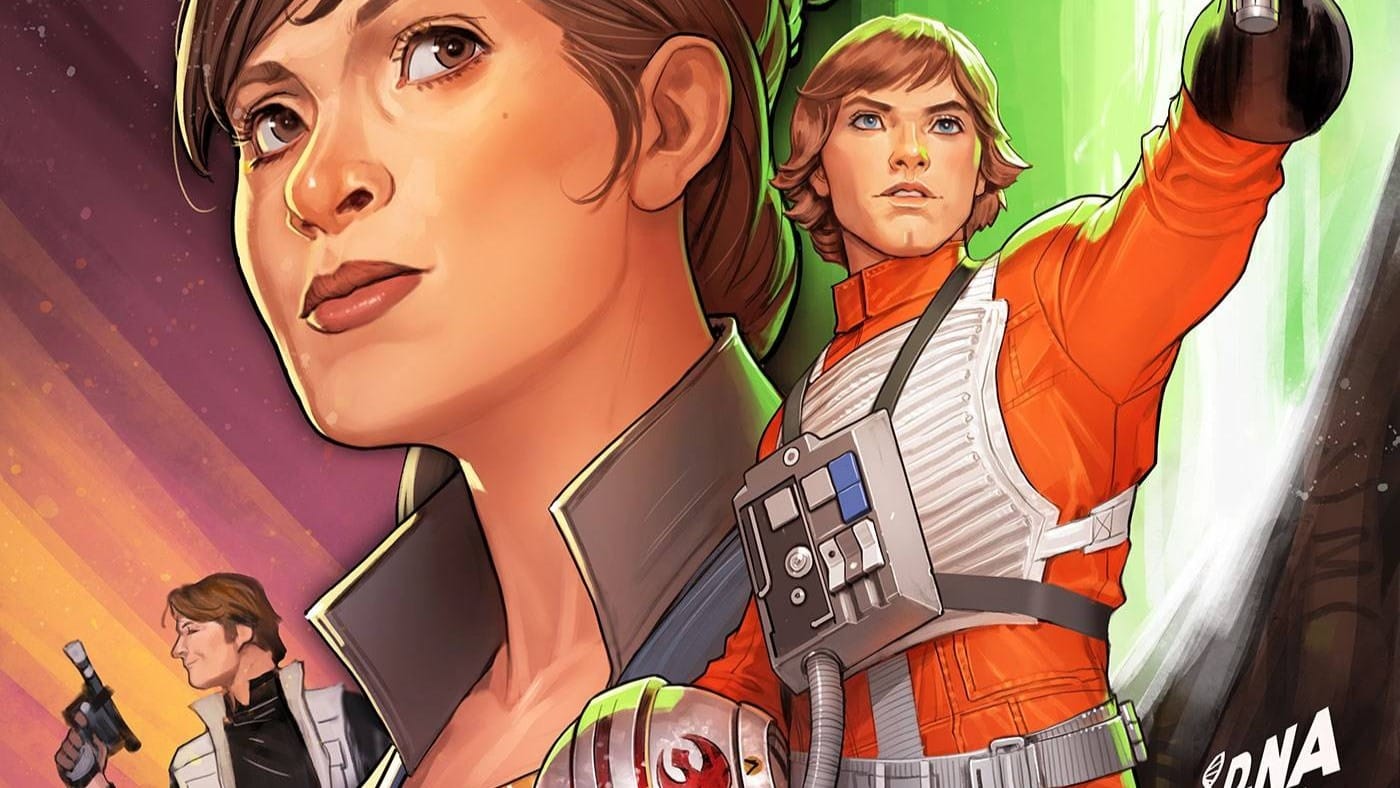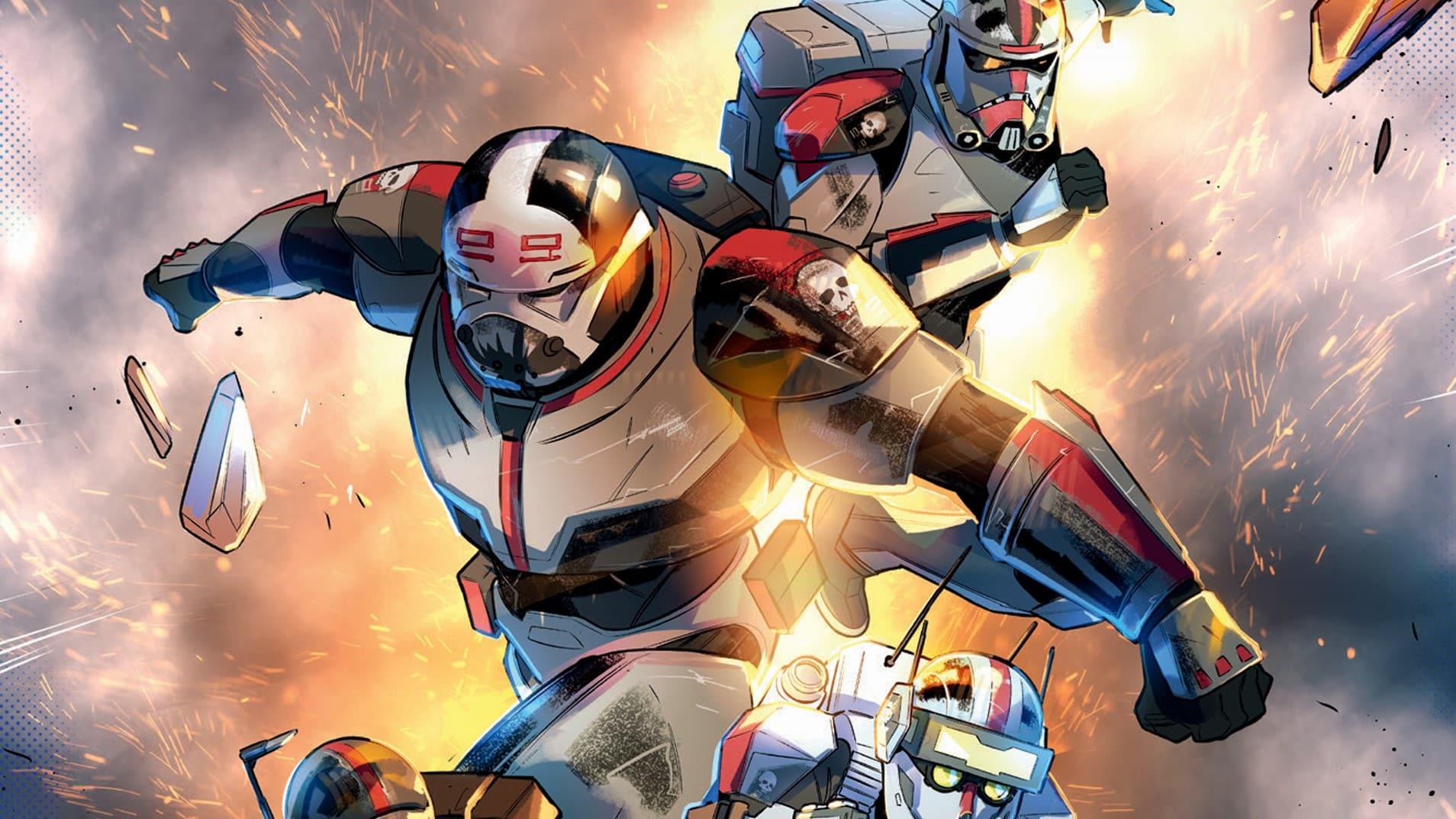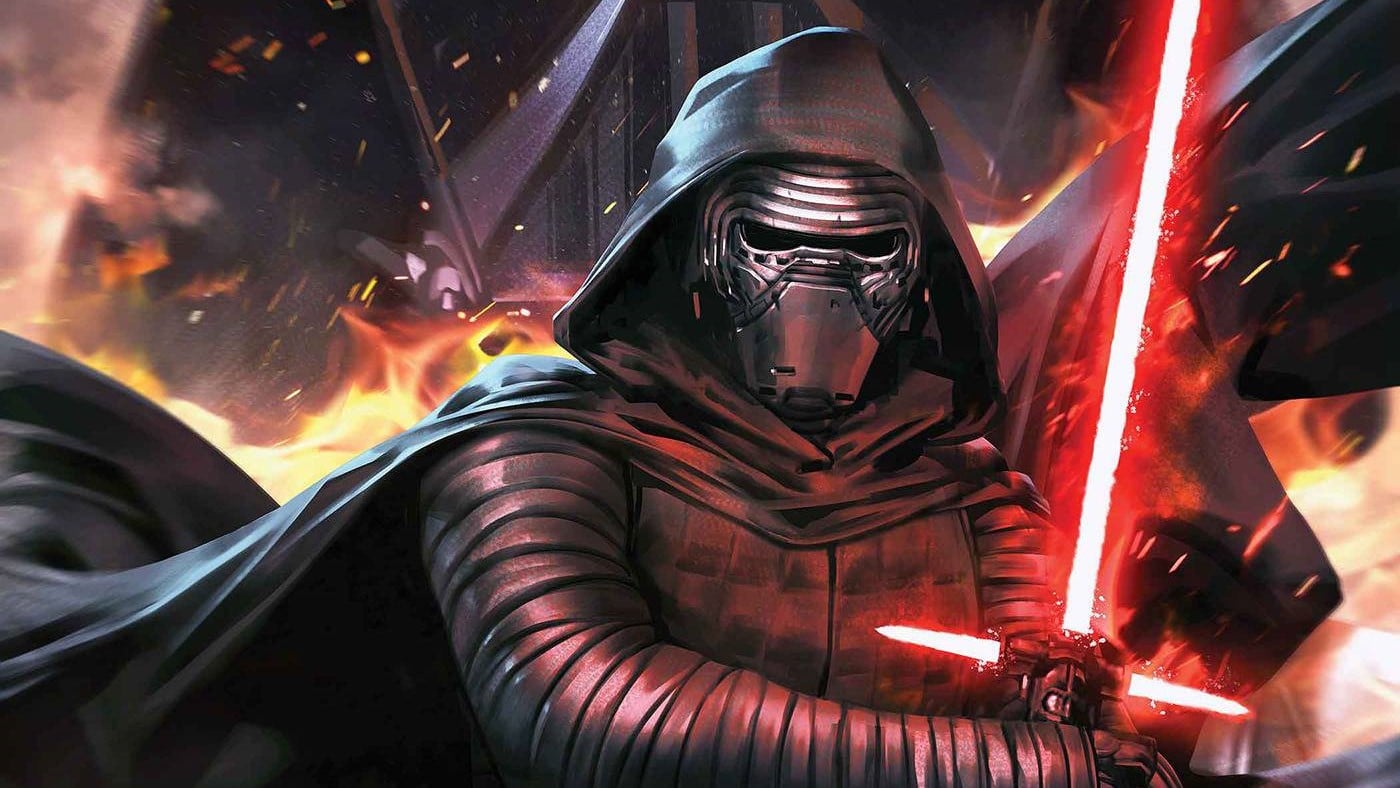Old favorites from the Charles Soule Star Wars canon are revisited via an anthology of tales in Star Wars #25, written by Charles Soule, art by Ramon Rosanas, Guiseppe Camuncoli, Danielle Orlandini, Will Sliney and Phil Noto, colored by Rachelle Rosenberg, Arif Prianto and Guru-eFX and lettered by Clayton Cowles.
With Commander Zahra defeated and the Rebel fleet at last reunited by the conclusion of the previous issue, Star Wars #25 settles in to celebrate (this volume of) the series reaching the quarter century mark with an anthology of tales set in different eras of the Star Wars timeline – specifically, eras featured in series previously written by Charles Soule. The whole thing reads like it’s intended to be a celebration of Soule’s Star Wars work (in an introductory text piece, he explains that this issue represents his 100th Star Wars script), so much so that I looked ahead to see if he was listed as the writer of the next issue, afraid I’d somehow missed an announcement about his departure from the line (he is at least the intended writer of Star Wars #26 per Wookieepedia). Like many anthologies, the collective result is a bit of a mixed bag, and though Soule and his artistic collaborators manage to reach a reasonably high collective mean, Star Wars #25 works much better as a celebration of Soule’s catalog than it does as the twenty-fifth issue of the series
The first story features Obi-Wan and Anakin set between Episodes I and II (a return to the era of Soule’s Obi-Wan and Anakin miniseries) and is drawn by his usual Star Wars collaborator Ramon Rosanas. It is paired, structurally and thematically, with the second story, set after Revenge of the Sith and drawn by Giuseppe Camuncoli and inked by Danielle Orlandini, the artists on Soule’s Darth Vader volume set in the same time period. Both are titled “The Lesson” and both stories function as lessons being delivered to Anakin/Vader about the perspectives on lightsabers held by the respective Force-wielding organizations, Jedi and Sith, to which he belongs, each delivered by his master at the time.
Light on plot (both can be described as “Anakin learns a lesson about lightsabers”), they succeed by working in tandem with each other, comparing and contrasting the Jedi and Sith relationships with their iconic weapons and the dynamic between Anakin and his respective masters. The connection is reinforced thanks to a parallel series of double page splashes at the center of each story, in which Rosanas and Camuncoli depict the action via a series of long, rectangular panels that stretch across the pages, mimicking the shape of a lightsaber. Those pages, and their repetition in each story, are a highlight of the issue.
The third story, “See You Around, Kid”, is set between The Last Jedi and Rise of Skywalker. It follows Kylo Ren to three different locations as he angrily searches for traces of Luke Skywalker. Reunited with Will Sliney, with whom Soule chronicled Ben Solo’s transformation into Kylo Ren in The Rise of Kylo Ren miniseries, it is the sparsest script of the bunch, at least in terms of dialogue. It’s also the weakest story, as it’s mostly just about Kylo Ren yelling at the air for a few pages. Aside from a few snippets of dialogue with Vicrul, the former leader of the Knights of Ren whom he deposed (and would later kill in Rise of Skywalker), little about it connects back to the original miniseries, and the ultimate conclusion of the story seems to be “Kylo Ren sure seems to be irrationally mad, huh?” which isn’t exactly the hottest of takes at any point in that character’s existence.
The final story,”A Eulogy for Snap”, from Soule and Phil Noto, reunites the initial creative team from the Poe Dameron series, and depicts, essentially, the funeral of Snap Wexley. Snap, who died during the climax of Rise of Skywalker, is a complicated character. Played as he is by JJ Abrams mascot Greg Grunberg (childhood friends, Grunberg has made appearances of varying sizes in nearly all Abrams’ projects), to movie-watching-only audiences Snap likely falls somewhere between “an afterthought” and “a mild joke” as a character (i.e. “Hey look, it’s that guy who always shows in JJ Abrams’ stuff!). But in classic Expanded Universe fashion, he became a much richer character in non-cinematic material, like the Chuck Wendig novels which introduced him as a youth and the Sequel Trilogy era Soule/Noto comic book series in which he was a regular fixture, a member of the Black Squadron led by Poe Dameron.
The story itself is the usual funeral fare, the surviving cast members of the series lamenting Snap’s loss and sharing stories along with largely generic platitudes (the occasional and appreciated Mister Bones reference aside). How emotionally affecting the story is largely depends on how much you read (or remember) the earlier series, but it works well enough as both an epilogue to that book (with a comic book story arguably the best place to eulogize a character like Snap) and as an attempt to make a small amount of lemonade out of Rise of Skywalker’s lemons. Ultimately though, “A Eulogy for Snap” is more a continuity point – Snap Wexley’s funeral – than a story.
Perhaps the most curious thing about Star Wars #25 are the stories it doesn’t feature: it stays entirely clear of the Original Trilogy era in which the series is (usually) set. While it simply could be a case of wanting to dedicate the pages to eras written by Charles Soule that aren’t currently being otherwise covered by the line (there are currently A LOT of books playing in the post-Empire, pre-Jedi timeline), it does seem odd to have an issue celebrating both the sweep of Star Wars and the series reaching a numeric milestone without featuring some of both the saga’s and the series’ most notable characters – even if those characters appeared in the book the month before this issue and will again the month after. It ultimately makes the whole thing feel more like a celebration of Charles Soule than of Star Wars and/or this series’ reaching twenty-five issues.
Is that a bad thing? Probably not. It’s certainly a pedantic quibble. But it does create a sense that there’s hole in the issue around which all the other stories are circling, like the element which would unify the parts was left on the cutting room floor. While the stories themselves (mostly) have something to recommend each of them, be it the parallels of the two sparring sessions, the appreciated acknowledgement of the death of a notable (in the comic book world) character that otherwise went largely unremarked upon in the film where it happened, or even the raw, illogical fury of Kylo Ren, they never quite come together, and the issue is lesser for it. The parts are entertaining enough, but the whole is ultimately lacking.
Austin Gorton also reviews older issues of X-Men at the Real Gentlemen of Leisure website, co-hosts the A Very Special episode podcast, and likes Star Wars. He lives outside Minneapolis, where sometimes, it is not cold. Follow him @austingorton.bsky.social.

